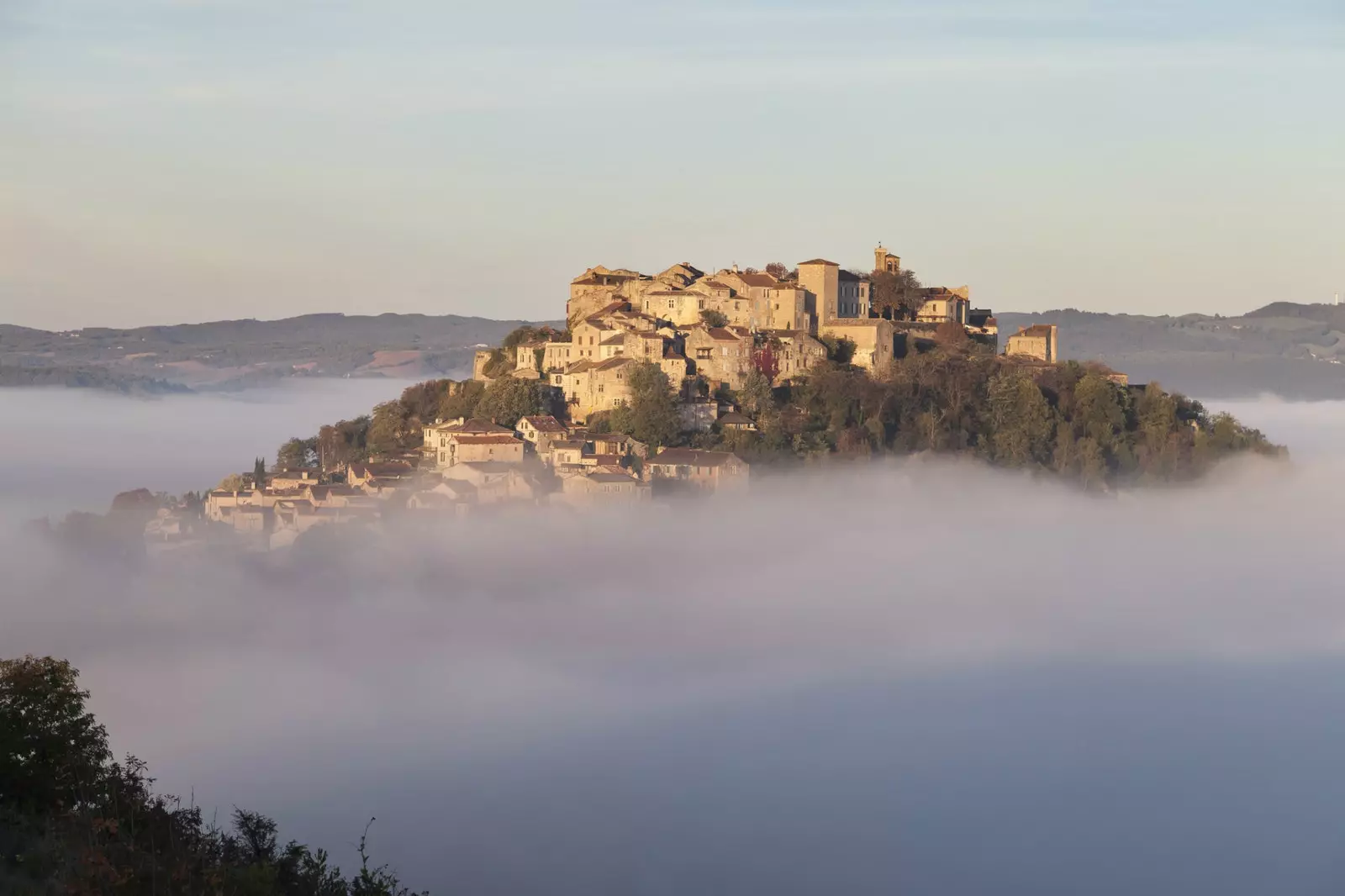
Cordes-Sur-Ciel looks like something out of a medieval fairy tale.
In the historic French region of Occitanie, the vineyards stretch along wide valleys where history has left its mark in the form of religious persecution, bloody battles and terrible injustices. Nothing new in this world we inhabit. However, centuries after the screams of warriors, the crack of steel and the crackle of fire, died away, this Gallic region appears before the eyes of the traveler with a mature beauty, like the complexion of a person whose haphazard and unhappy youth left indelible marks, but without being able to destroy his innate attractiveness.
The best way to get to know the history, landscapes, gastronomy and towns of Occitania is make a trip by car through the departments of Tarn and Tarn-et-Garonne (Tarn et Garonne) . And it is that the Tarn – a river 381 kilometers long that ends up joining the mighty Garonne riverbed – will be the reference of a route that passes through the cities of Montauban, Albi and the bastide of Cordes-sur-Ciel.
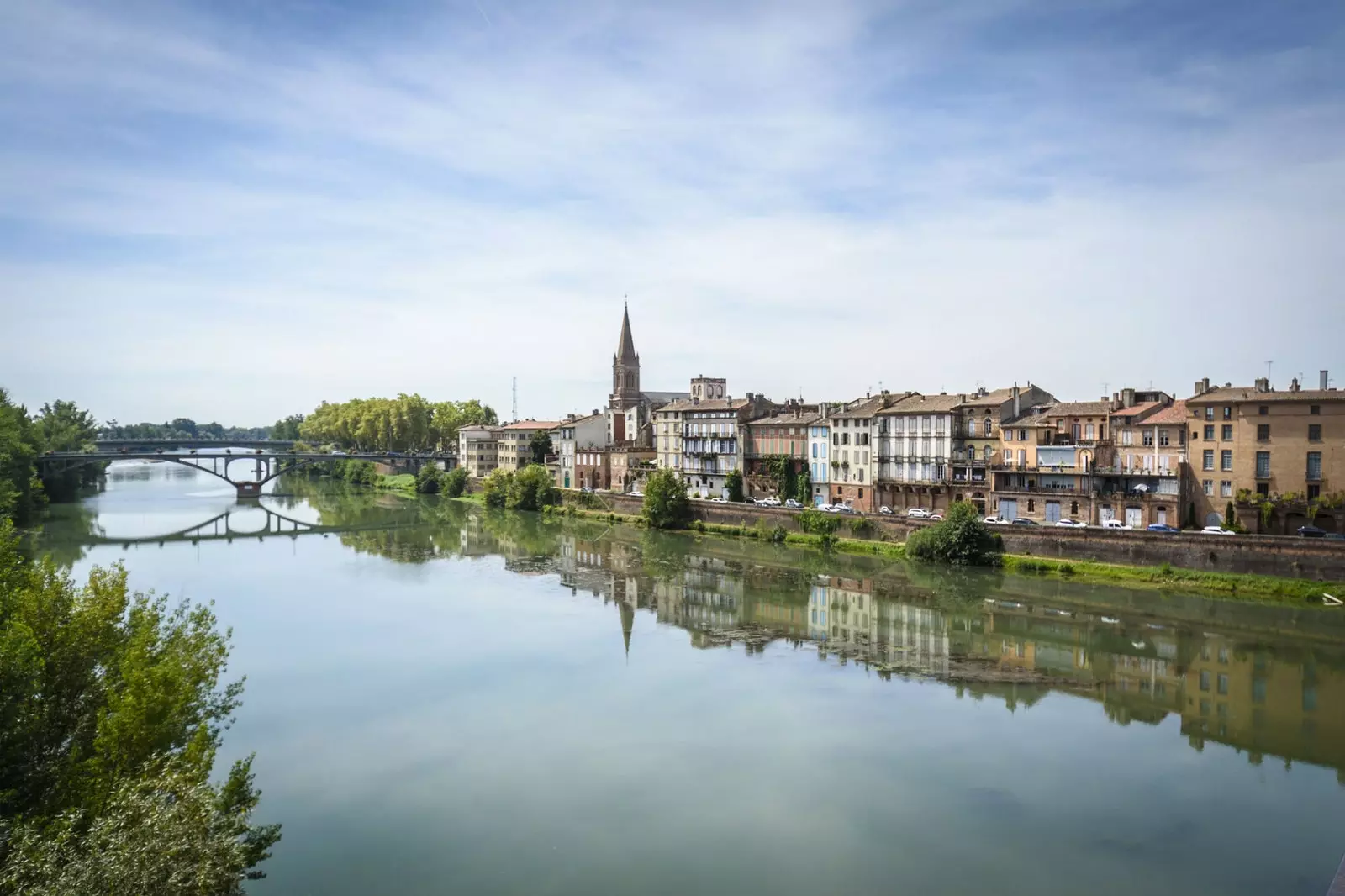
The historic center of Montauban invites you to stroll calmly, taking into account its architectural beauty.
MONTAUBAN, THE PINK CITY
A good point to start the trip is the city of Montauban. Known by the nickname of The Pink City -because of the numerous downtown buildings that were built with bricks of that color-, Montauban is the capital of the department of Tarn-et-Garonne and was erected, after the spread of Protestantism in France (16th century), as one of the main bastions of opposition to the French Catholic monarchy.
A city inhabited by some 60,000 souls, Montauban is pleasant and welcoming, inviting you to stroll slowly through the streets of its historic center. Three main samples remain of its ancient medieval splendor: the Old Bridge, the Church of Saint Jacques and the Place Nationale.
The Old Bridge has been stretched over the waters of the Tarn since the 14th century and continues to retain that romanticism typical of ancient works of man that have undergone few modifications.
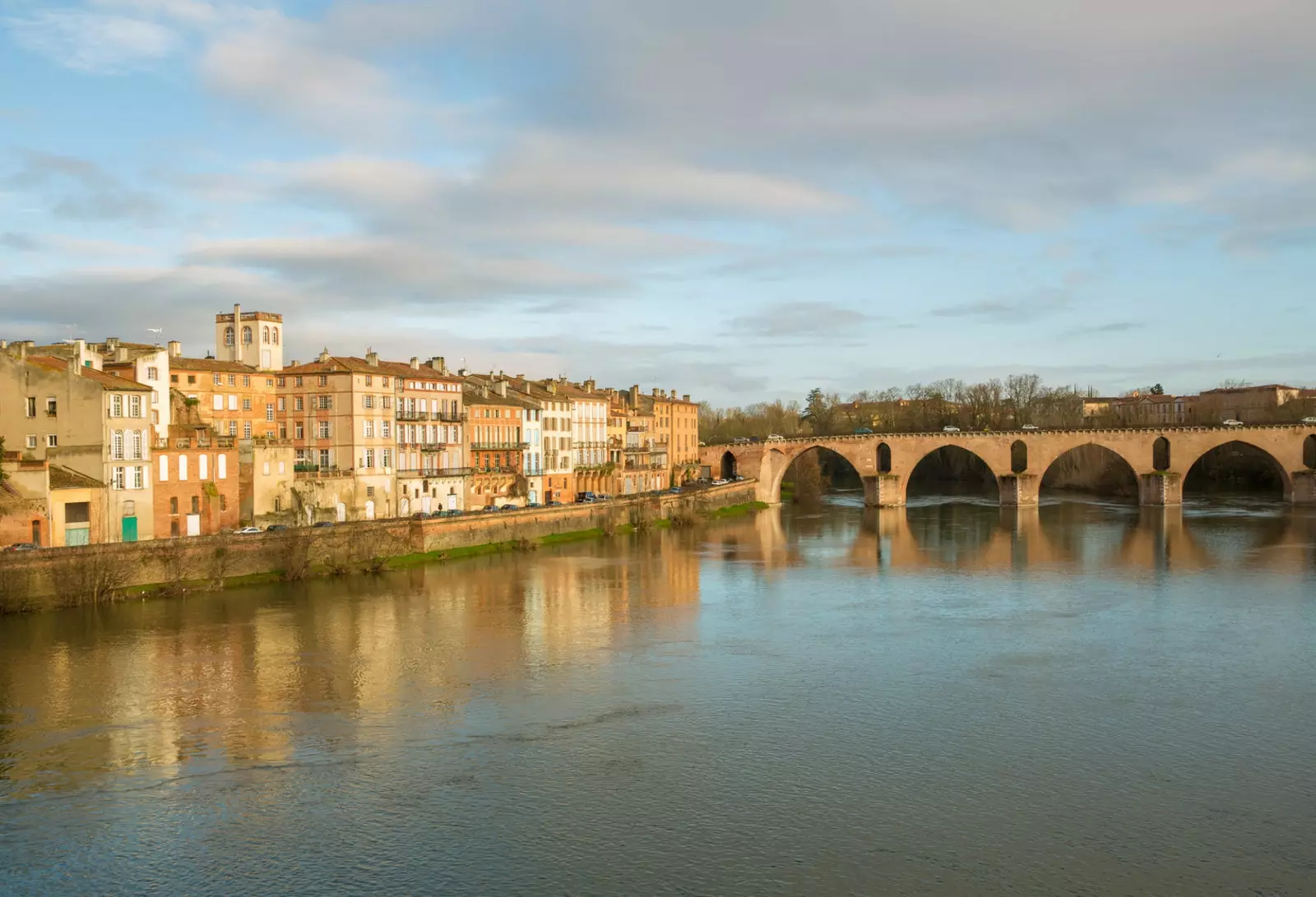
The old bridge of the city of Montauban crosses the Tarn river.
The Place Nationale, however, has changed its medieval appearance for a more modern one, since in the 17th century a terrible fire destroyed the vast majority of wooden buildings that occupied the four sides of this unique square with double arcades.
Now, those buildings, of course, are dressed in pink brick. The Church of Saint Jacques is the true symbol of Protestant resistance, because you can still see the traces left by the cannonballs that the forces of King Louis XIII fired at it during the siege of 1621.
Inside, a mixture of styles from different periods is embellished by paintings from the 18th century. Precisely in that century the painter Jean Auguste Dominique Ingres shone, most important personality born in Montauban and whose works you can admire, along with the sculptures of the 19th century master, Antoine Bourdelle, at the Ingres Museum.
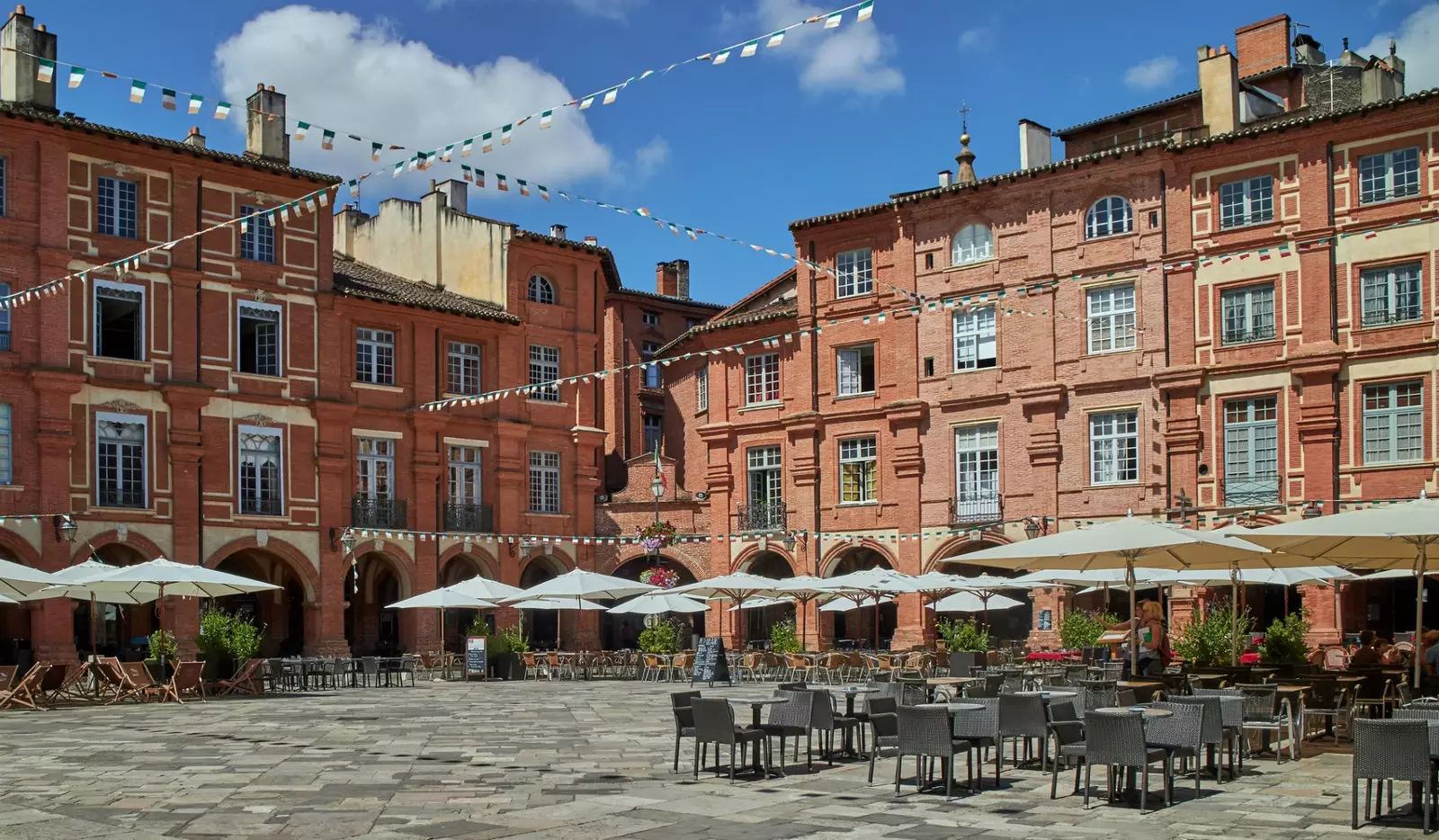
The buildings of the Place Nationale are dressed in pink brick.
CORDES-SUR-CIEL, THE FIRST BASTIDE OF FRANCE
After leaving Montauban behind, a stretch of about 60 km of road takes you through beautiful landscapes of the French countryside made up of sleepy little towns, farms, wooded patches and endless rows of vineyards. The culmination of this idyllic landscape comes when you face the rocky crag on which the medieval town of Cordes-sur-Ciel perches.
Cordes-sur-Ciel is a place with a soul where you will think you have traveled back in time to the Middle Ages. This fortified city was created in 1222 by Raymond VII (Count of Tolosa) to give protection to the many Cathars who, victims of the persecution of the Catholic inquisitors, lived scattered and terrified in the nearby fields. Its four concentric walls made the first bastide built in France an almost impregnable place.
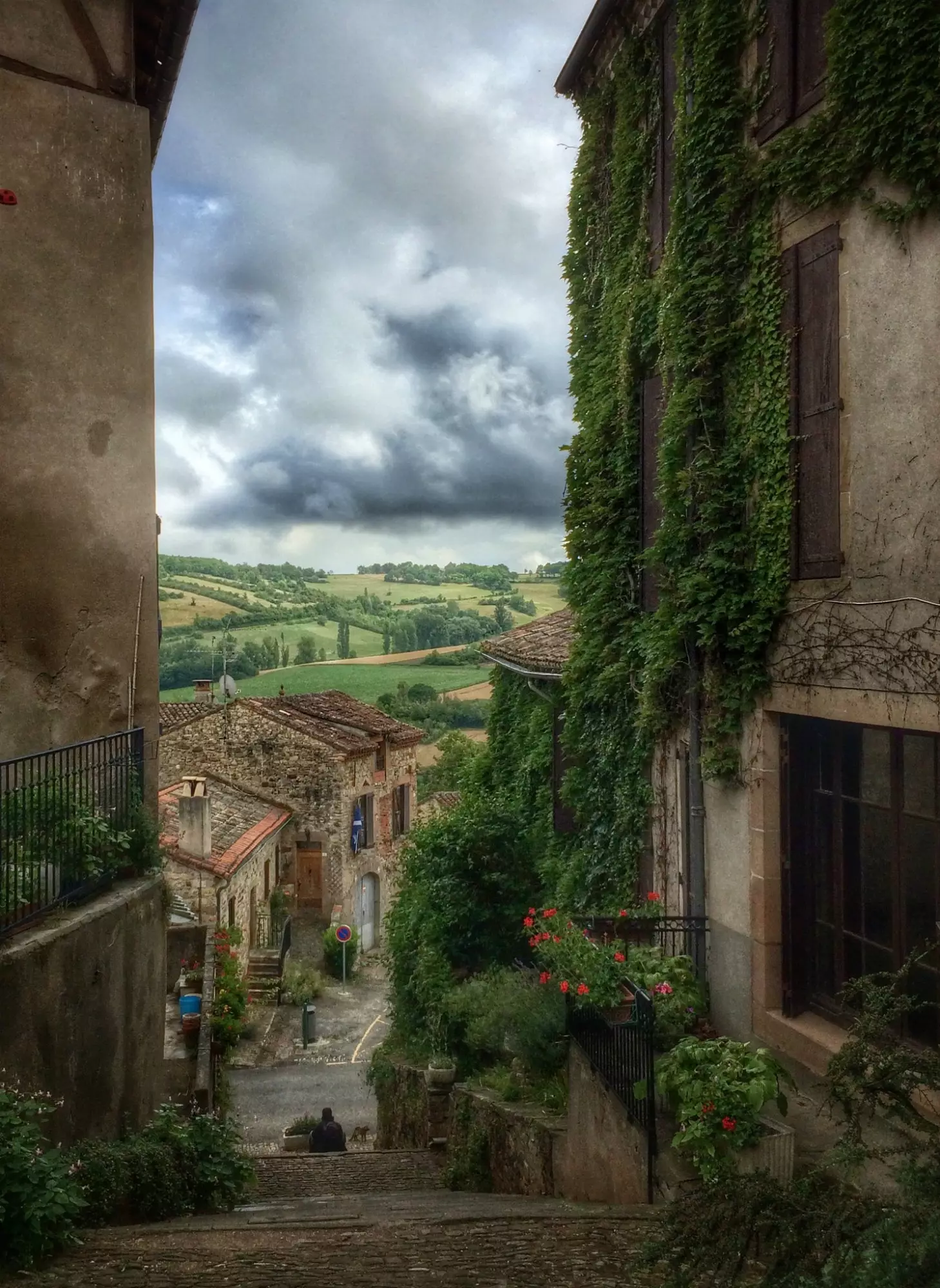
The medieval town of Cordes-sur-Ciel was the first bastide built in France.
In its interior, the population prospered while trading in wool and skins, and acting as a border customs post. Cordes-sur-Ciel's greatest source of wealth was the cake plant, from which a blue dye was extracted used, before the arrival of indigo from the Americas, to dye fabrics and buildings.
However, Cordes-sur-Ciel had to put up with harassment from the Catholic Church and its allies for giving asylum to the Cathars. Catharism, which emerged in the eleventh century, defended that everything material was the work of the devil, while the spiritual life led to the definitive salvation of the soul that had been locked up in a physical body. During his life, the Cathars despised all kinds of goods, kept chastity and only worked the soul. The Catholic Church, a good lover of earthly riches, began to persecute them as soon as they learned of their existence.
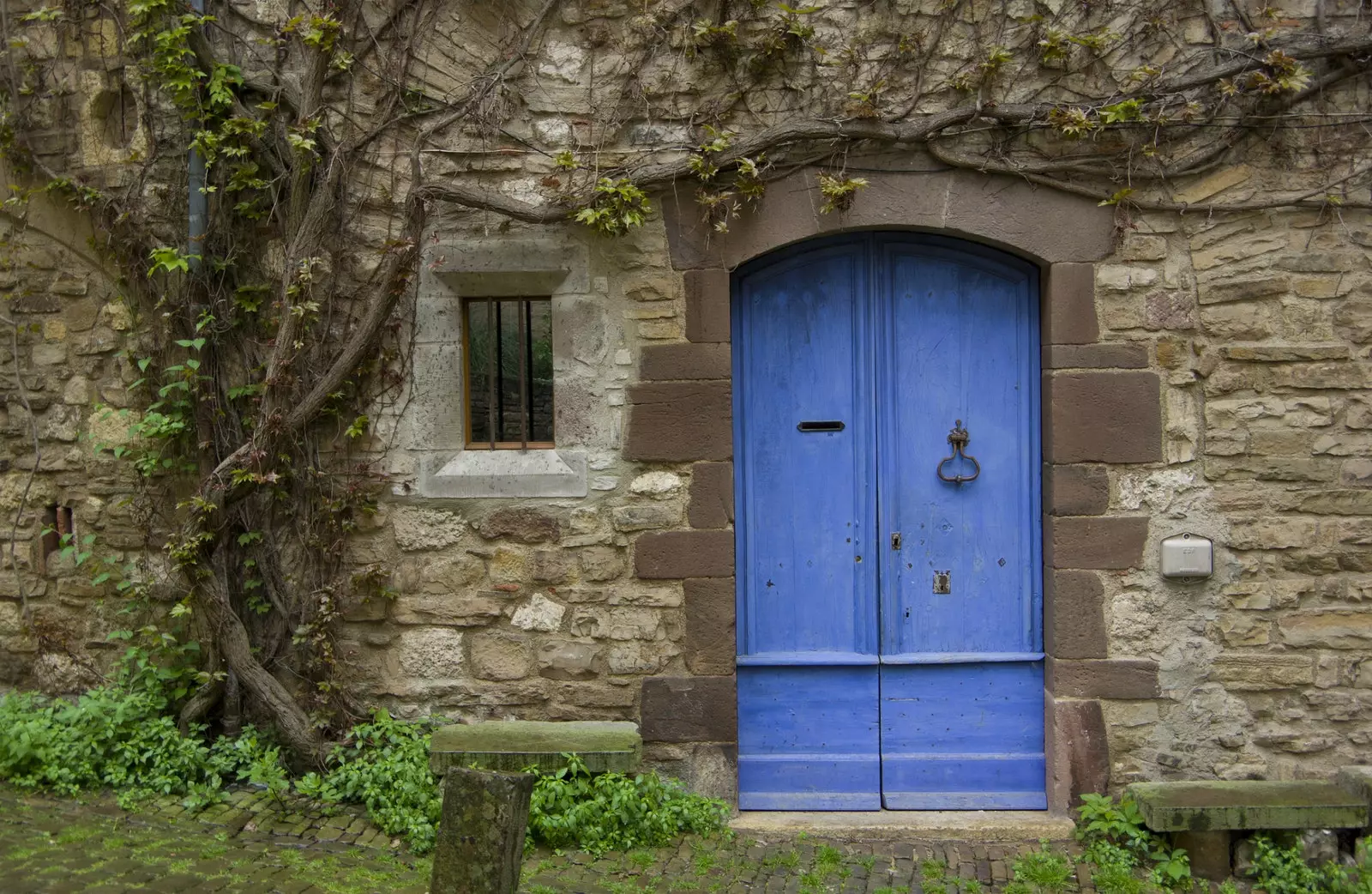
Typical medieval house in Cordes-sur-Ciel.
The tumultuous past of Cordes-sur-Ciel has little to do with the tranquility that is breathed today in its narrow medieval streets filled with craft and souvenir shops, and small hotels and restaurants of a romantic nature, such as L'Escuelle des Chevaliers, where you can taste the magnificent French duck casserole and Gaillac wines, to later sleep like a true medieval knight.
The Gothic houses, built during the period of maximum economic splendor, they have a stately bearing and show sculptures in relief which, according to lovers of historical intrigues, hide revealing religious messages.
Also a sculptor was the father of French actor Jean Paul Belmondo, who spent the years of World War II here, when Cordes-sur-Ciel was part of the French free zone. The inspiring beauty of the bastide also attracted other artists of the time, like the writer Albert Camus and colleagues of Dalí and Picasso.
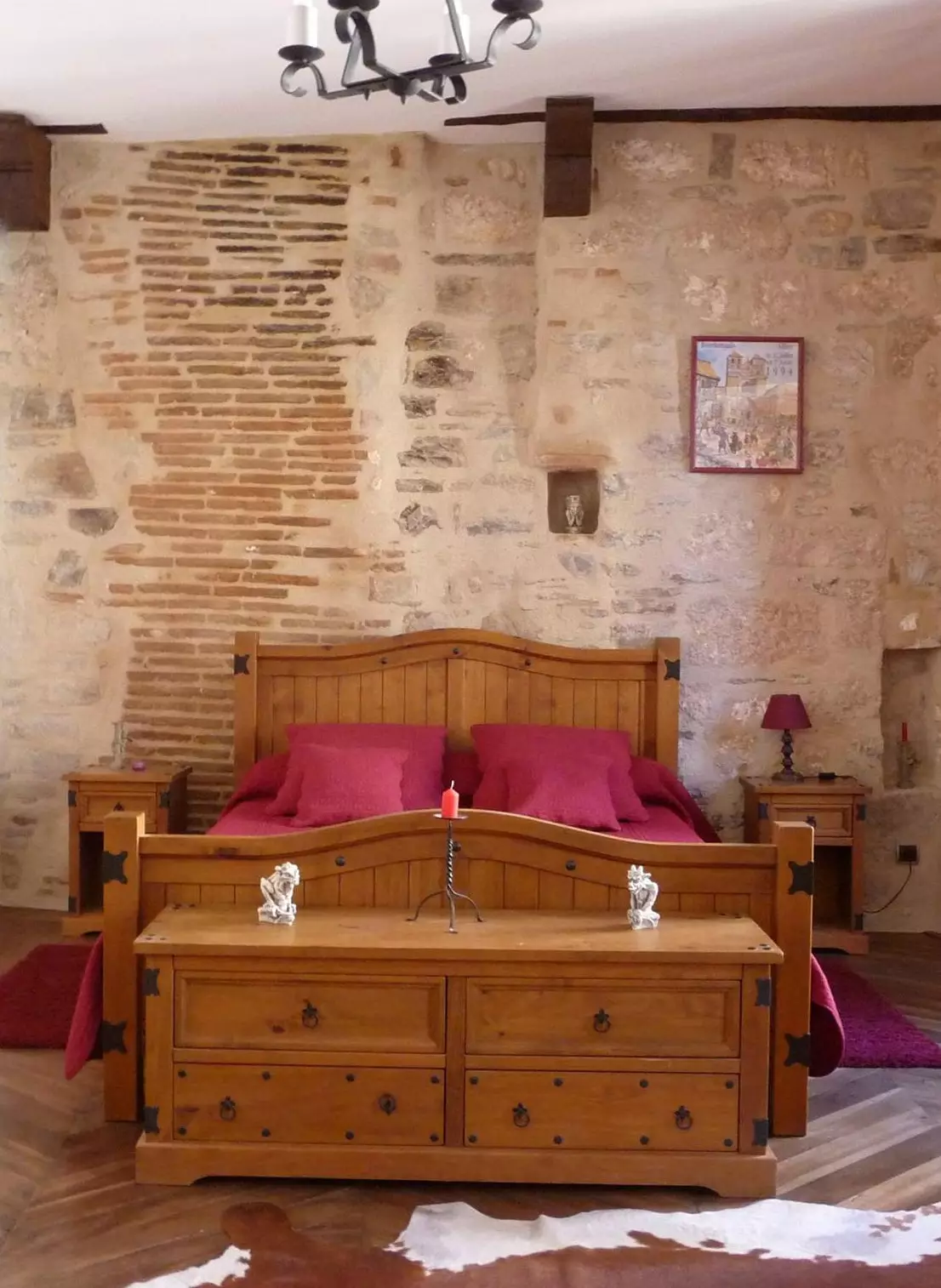
One of the rooms in the medieval inn Escuelle des Chevaliers.
ALBI, A WORLD HERITAGE SITE
Leaving Cordes-sur-Ciel and rejoining the D115 road, you feel as though you are coming back from the Middle Ages to rural France today. After half an hour of driving, the beautiful bridges of Albi are drawn on the horizon, standing out among them the Old Bridge, which has been overlooking the waters of the Tarn for almost a millennium.
Declared a World Heritage Site by UNESCO, Albi offers real gems to the traveller. You cannot leave the city without visiting the museum housed in the former episcopal palace of La Berbie. It pays tribute to the great Toulouse Lautrec, born in Albi and a genius who left his mark on his mere 37 years of life. More than 1,000 of his works – including his most classical early paintings, countless sketches and 30 of his most famous posters – are on display in this episcopal palace.
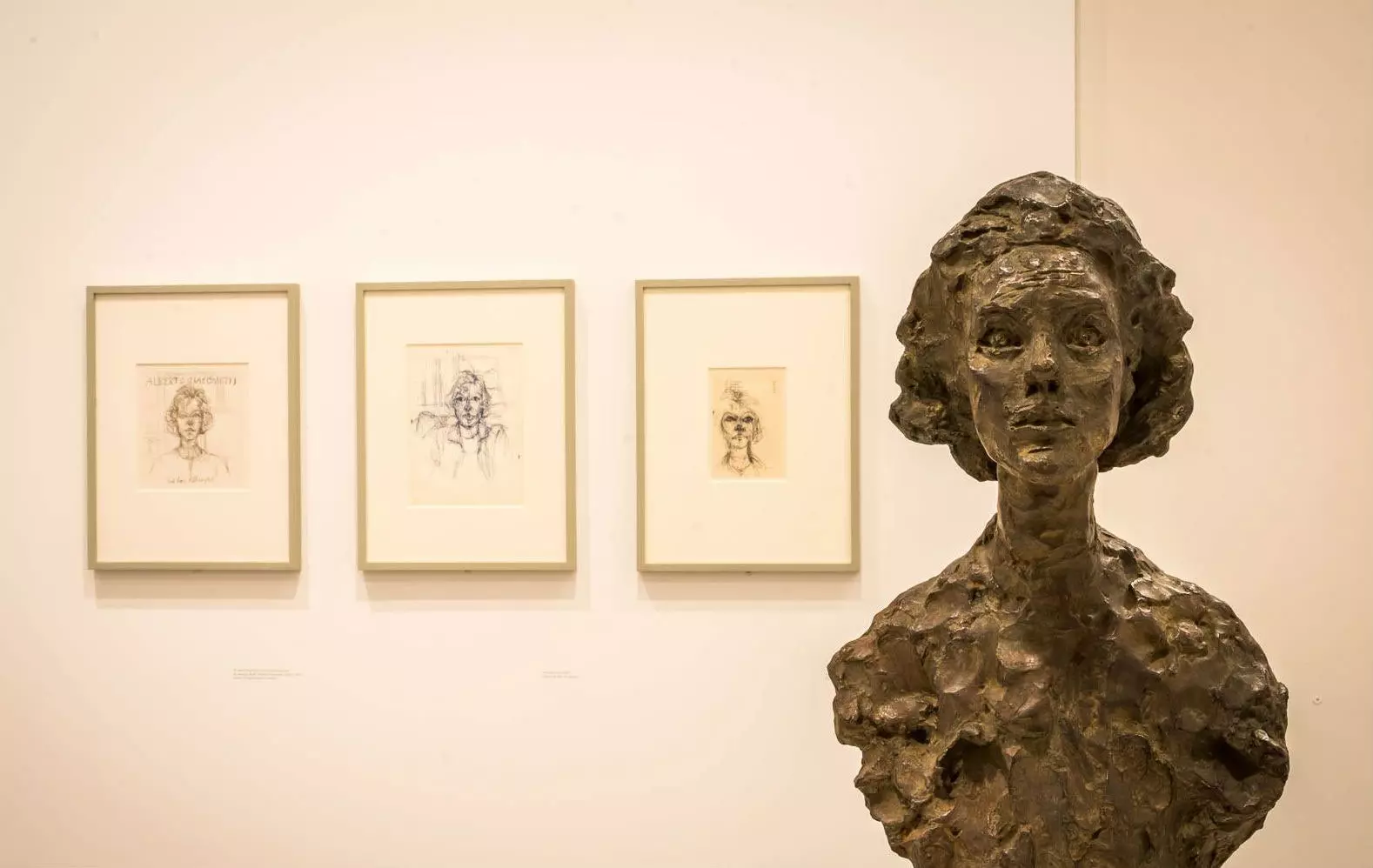
Giacometti exhibition at the Musée Toulouse-Lautrec in Albi.
Not far from the temple of the great Lautrec, another very different one rises as if it were an impregnable fortress. And that is the impression given by the exterior appearance of the Cathedral of Santa Cecilia, a church built in the 13th century after the recovery of Albi from the hands of the Cathar nobles, and with which the Catholic leaders wanted to make it clear that they had crushed the dissidents.
However, the most impressive thing about Santa Cecilia is not its brick exterior – it is the largest brick cathedral in the world – but the frescoes that decorate the main vault inside. Their color is bright and the pastel blue stands out from the rest. Their excellent state of preservation is due to the fact that these frescoes were covered under other layers of paint for centuries, as a result of the different reforms that the cathedral underwent.
The sunset in Albi is magical. The bridges are dyed orange and the city seems to recover that medieval halo that awakens traveling dreams. Occitania has not lost its romanticism over time, quite the contrary.
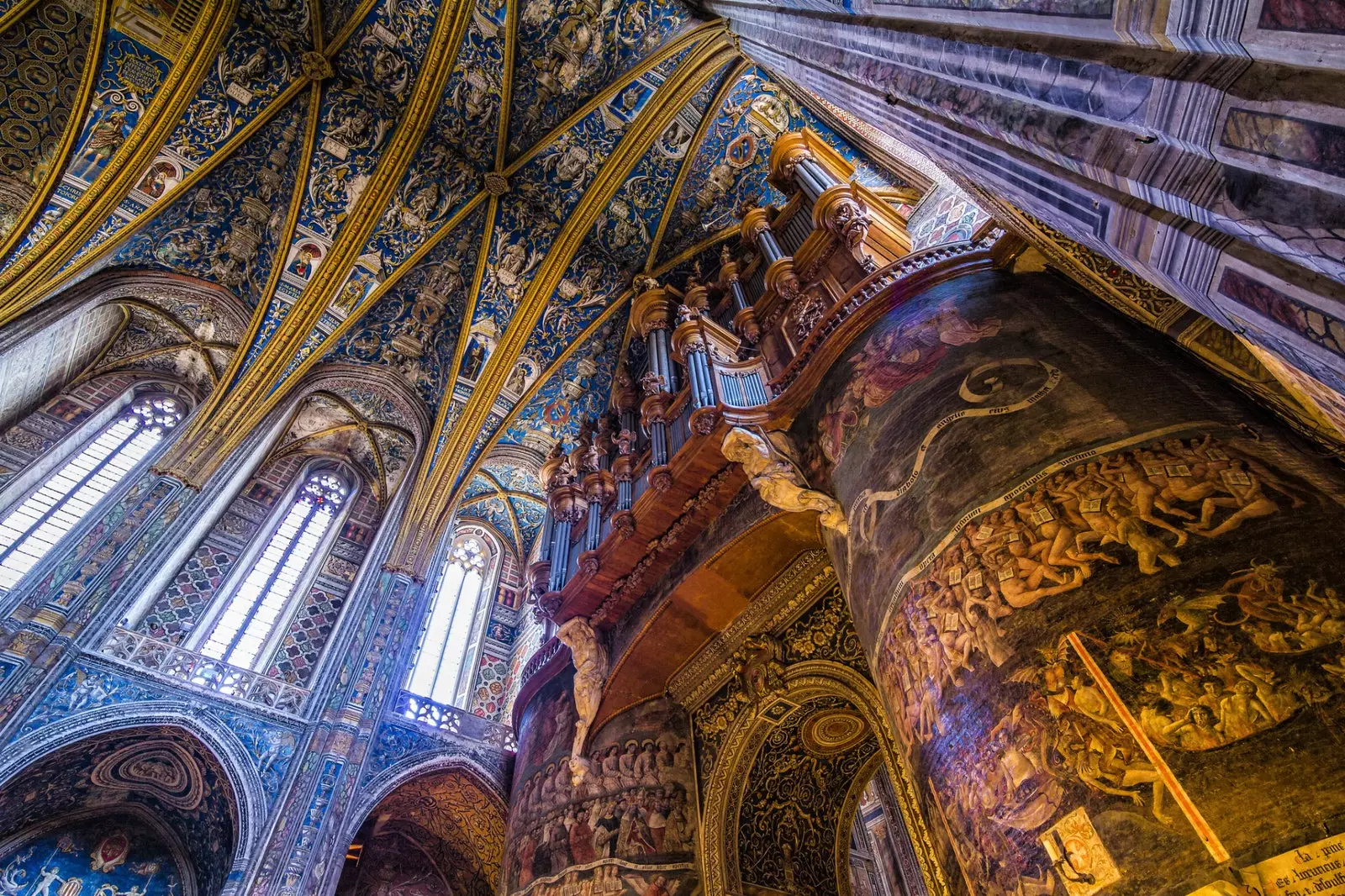
The interior of the 13th-century Cathedral of Santa Cecilia will leave you speechless.
